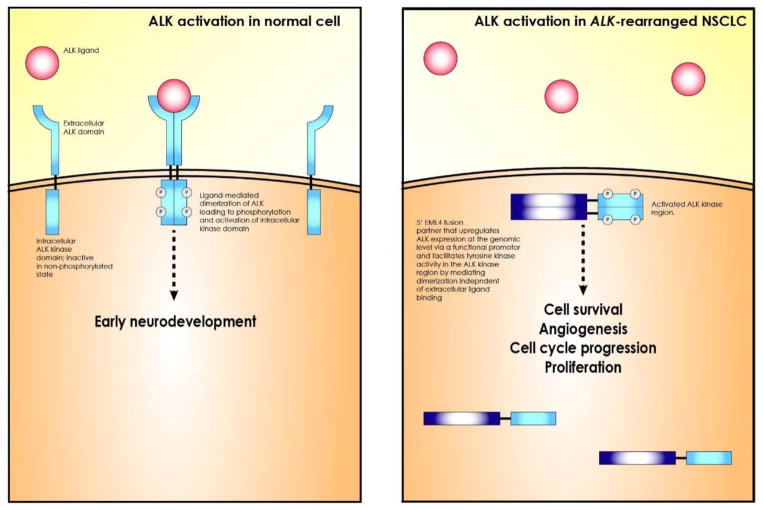Figure 1.
ALK biology and oncogenesis. Activation of ALK is developmentally regulated and sparse in adult tissue. It appears to be involved in neurodevelopment and is largely restricted to the gut, CNS, and testes in adulthood. Native ALK signaling occurs via extracellular ligand-mediated dimerization of ALK and subsequent autophosphorylation and activation of the intracellular tyrosine kinase domain. The native ligands that bind to and activate ALK have remained unknown, although recent evidence suggests that heparin may be one [74, 75]. In ALK-rearranged NSCLC, ALK activation occurs independently of ligand-mediation. The 5′ fusion partner of ALK provides a functional promotor that escapes normal ALK regulation and expresses a domain in the functional protein that facilitates dimerization. In this way, the kinase domains of separate ALK proteins, which are entirely intracellular in ALK-rearranged cells, are brought into proximity for autophosphorylation. This ultimately results in downstream activation of signaling pathways that enhance cell survival, angiogenesis, cell survival and cell cycle progression [10]. Implicated pathways include STAT3, mTOR, PI3K, Ras, and MEK.

